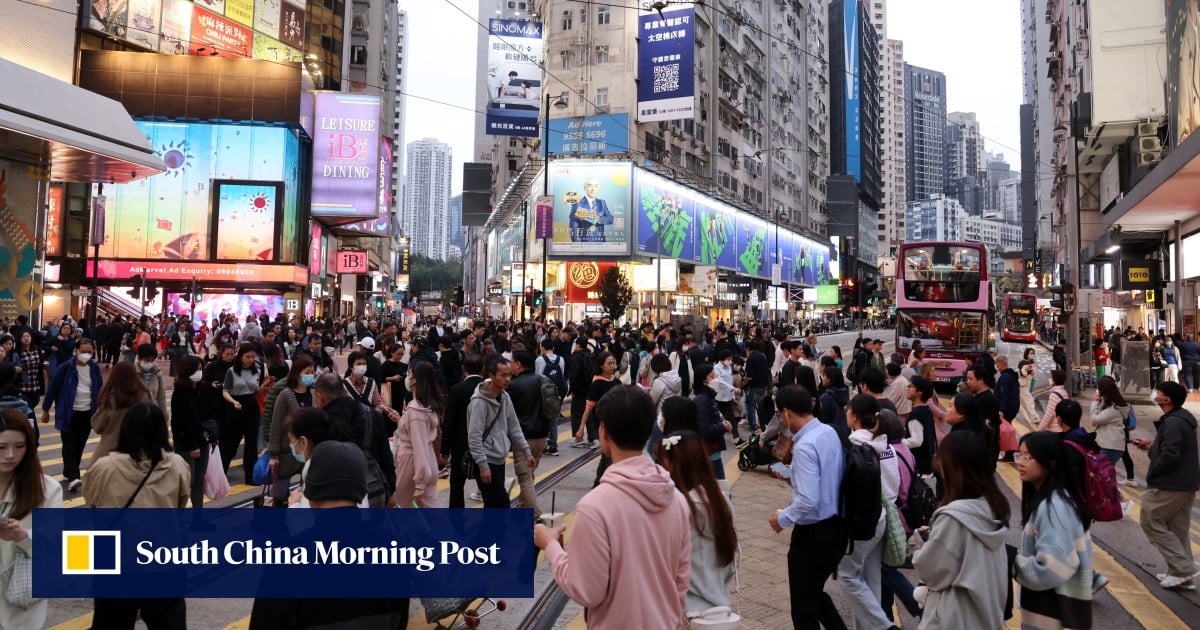


“You have to test whether the fundamental facilities, for example the border crossings, accommodation and consumption, can cope. This will just take some time.”
The proposal to raise the duty-free allowance – from 5,000 yuan (US$694) to 30,000 yuan per person for each trip – for mainland tourists has been gaining steam, becoming a focus for Hong Kong delegates attending the key political meetings in the capital, known as the “two sessions”, or lianghui.
Sources familiar with the matter said the mainland side “well noticed” the gap between the duty-free limit enforced in Hong Kong and the island province of Hainan, which is also popular with mainland travellers. After gradual increases of 5,000 yuan since 2011, the allowance now stands at 100,000 yuan per year.
On Wednesday, Hainan authorities announced that over the Lunar New Year period, the island province recorded duty-free sales of 7.4 billion yuan (US$945.8 million), generated by shoppers’ 938,000 trips.
Hong Kong overnight visitor spending falls 37%, set to return to 2019 levels
“The central authorities are actively considering raising it, as signalled by the attendance of several senior officials from Chinese Customs in a meeting with the delegation,” one of the sources said, referring to a Tuesday closed-door session among Hong Kong’s NPC delegates. “It’s just a matter of time.”
The higher tax-free shopping limit was backed by former financial secretary Henry Tang Ying-yen, a member of the Standing Committee of the Chinese People’s Political Consultative Conference (CPPCC), and two-thirds of his 200 colleagues.
Speaking exclusively to the Post, former city leader Leung Chun-ying, also vice-chairman of the top political advisory body, said he also supported the idea, but added the city needed to revamp its tourism offerings to entice visitors.
“Raising the limit will definitely bring in more businesses and higher profits so that they can employ more workers,” he said. “In the long-term, we need to think about what we can do to make tourism a higher contributor to our GDP, which is only at 4 per cent at the moment.”
Hong Kong logs 540,000 tourist trips in first 3 days of Lunar New Year break
Starry Lee Wai-king, the city’s sole member of the NPC’s Standing Committee, said the higher allowance was “a consensus among society” as Hong Kong’s quota had not changed for almost three decades.
“We saw how the policy change has taken Hainan to a new level of development,” she told the Post. “But of course, this is not the only way to boost the industry. We also need to upgrade our carrying capacity.”
Bond Law Chen-pang, executive director of the Hong Kong Retail Management Association, agreed with the politicians’ call, and said that many of his members felt the current allowance was too low.
“We hope this tax exemption limit can be gradually increased in the future to, for example, 30,000 yuan, or perhaps more,” he said.
Economist Terence Chong Tai-leung, executive director of the Lau Chor Tak Institute of Global Economics and Finance at the Chinese University of Hong Kong, agreed the 5,000 yuan threshold was too low but warned authorities might face an increase in parallel trading if the amount was raised.
“For Hainan, if you want to smuggle, you need to take a plane to Hainan. The cost is high,” he said. “So even if [the threshold] is 100,000 yuan, you cannot go every day.”
“But for Hong Kong, if you increase it to even half of that to 50,000 yuan, then people can come from Shenzhen with very low cost and come and buy a 50,000 yuan thing every day, or twice a day.”